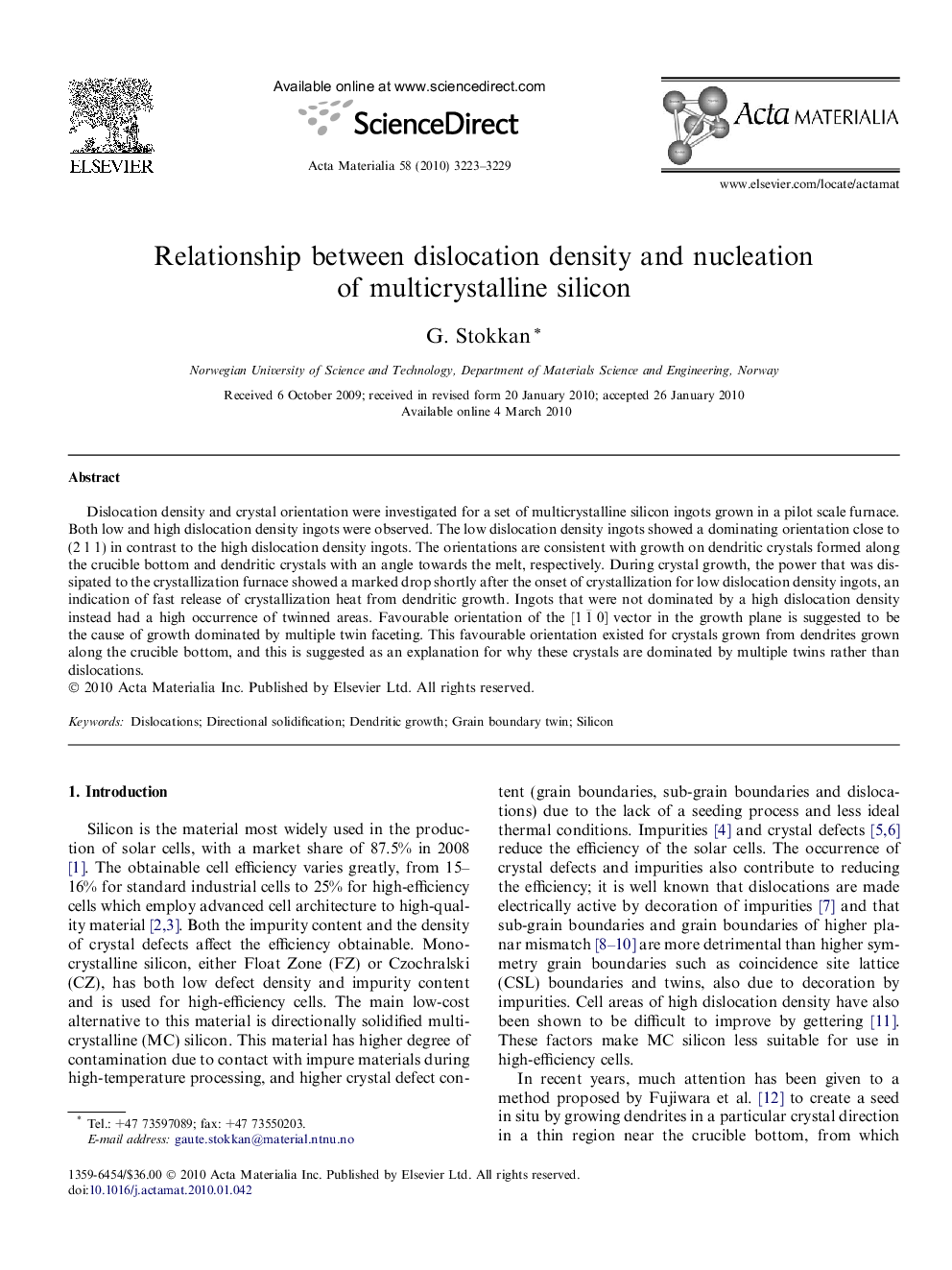| Article ID | Journal | Published Year | Pages | File Type |
|---|---|---|---|---|
| 1447976 | Acta Materialia | 2010 | 7 Pages |
Dislocation density and crystal orientation were investigated for a set of multicrystalline silicon ingots grown in a pilot scale furnace. Both low and high dislocation density ingots were observed. The low dislocation density ingots showed a dominating orientation close to (2 1 1) in contrast to the high dislocation density ingots. The orientations are consistent with growth on dendritic crystals formed along the crucible bottom and dendritic crystals with an angle towards the melt, respectively. During crystal growth, the power that was dissipated to the crystallization furnace showed a marked drop shortly after the onset of crystallization for low dislocation density ingots, an indication of fast release of crystallization heat from dendritic growth. Ingots that were not dominated by a high dislocation density instead had a high occurrence of twinned areas. Favourable orientation of the [1 1¯ 0] vector in the growth plane is suggested to be the cause of growth dominated by multiple twin faceting. This favourable orientation existed for crystals grown from dendrites grown along the crucible bottom, and this is suggested as an explanation for why these crystals are dominated by multiple twins rather than dislocations.
